It was a chance meeting back in the early 90s in a Manhattan restaurant when Italian twin brothers Simone and Amadeo Pace first met Japanese guitarist and singer Kazu Makino. Although the twins at that point had just graduated from the Berklee College of Music, their real-world education in the music business hadn’t really begun yet. Together with Kazu, the Pace twins formed Blonde Redhead and soon signed a record deal with Smells Like Records, which Sonic Youth drummer Steve Shelley was running out of his Hoboken home. The rest, as they say, is musical history. With nine studio albums under their belt and decades of endless international touring, the band today continues to produce albums which consistently expand the listener’s audio horizon.
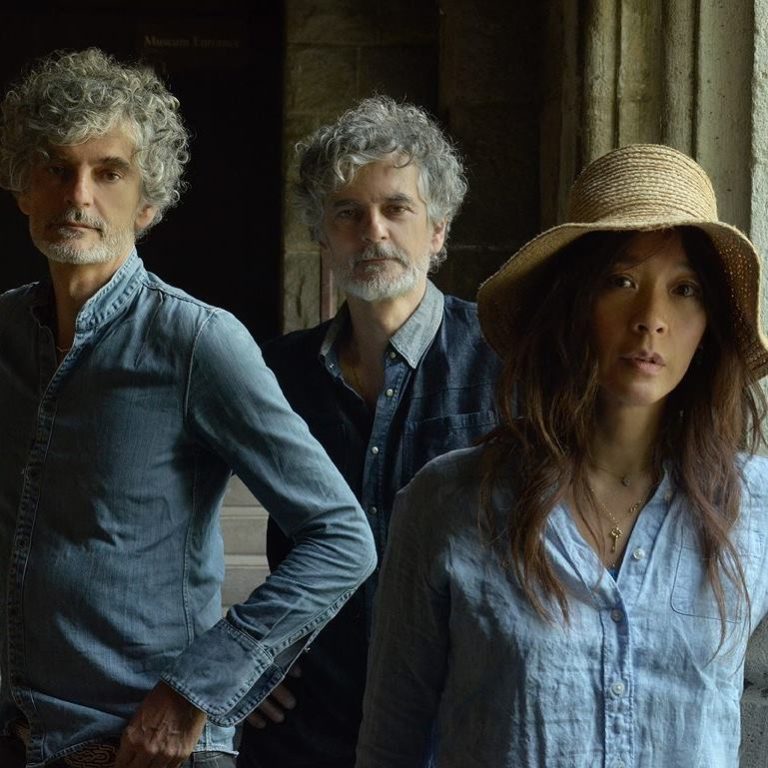 Yet throughout the band’s 25-year-long musical evolution, one fact has remained: Simone Pace is one titan of a drummer. A playing style that is at times hypnotic and organic, other times vicious and magnificent. With shades of jazz and Latin influences, Simone is a master of weaving together orchestrated loops on his entire drum set that so wonderfully enhance whatever his bandmates are playing. Whatever vibe he conveys at that given moment, it’s always on a Gretsch kit…night-in and night-out for the past 25 years. In fact, watching YouTube videos and photographs of Simone Pace on drums is like leafing through a 1970s Gretsch drum catalog.
Yet throughout the band’s 25-year-long musical evolution, one fact has remained: Simone Pace is one titan of a drummer. A playing style that is at times hypnotic and organic, other times vicious and magnificent. With shades of jazz and Latin influences, Simone is a master of weaving together orchestrated loops on his entire drum set that so wonderfully enhance whatever his bandmates are playing. Whatever vibe he conveys at that given moment, it’s always on a Gretsch kit…night-in and night-out for the past 25 years. In fact, watching YouTube videos and photographs of Simone Pace on drums is like leafing through a 1970s Gretsch drum catalog.
I had the chance to catch up with this veteran Gretsch drummer on his recent European tour supporting their latest EP 3 O’Clock to talk Gretsch drums, the music business, and life.
Lucas: Why do you play Gretsch drums?
Simone: I love Gretsch drums. There is such a feeling to them starting from that warm, particular sound to the way they are made. I love the die cast hoops, the inside silver sealer, and the different badges. I also love that they change personality in every situation and every room, and this makes them somewhat unpredictable in a positive and very interesting way. I played a different brand once a long time ago and the consistency of the sound bored me. I realize it’s not a defect but I get more out of interaction and having to adapt. This builds strength in your relationship with the instrument and this is what makes you fall in love with it. When I was younger I listened so much to Charlie Watts and Jimmy Cobb and I think that Gretsch sound sort of sunk in subliminally. For me that sound became what a drum should sound like. It’s the drum sound I can relate to the best. Amazing drums!
Lucas: When you and your twin brother Amadeo graduated from the Berklee College of Music, did you come to New York with the full intention of becoming professional musicians?
Simone: Yes, when I first came to New York I started playing a lot on the street with like-minded musicians. That was a very humbling experience. Moving to New York as a musician is not easy. I think the best thing that happened was meeting Kazu and starting the band. I don’t mean to be down on school, but learning to play music through a band was much more educational for me.
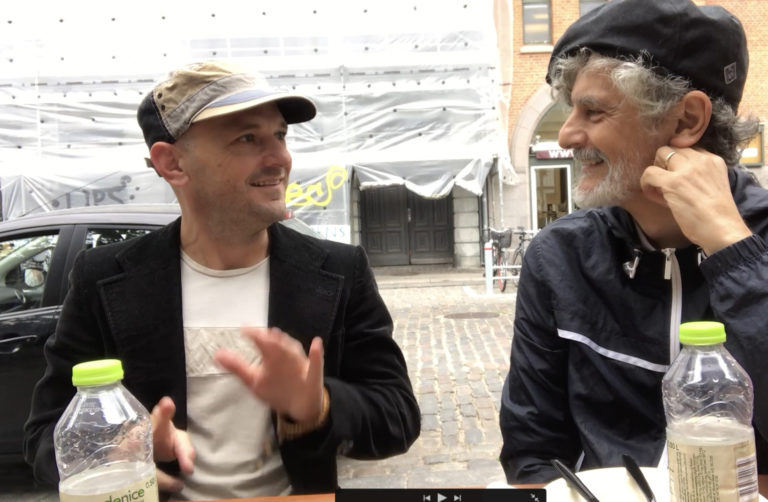 Lucas Von Gretsch interviews Simone.
Lucas Von Gretsch interviews Simone.
Lucas: The school of hard knocks.
Simone: Yeah. Learning how to compose, learning how to deal with different personalities, learning how to make compromises, learning how to put your foot down, learning how to read your instincts, learning what works in a song. For me that was the best education I ever got.
Lucas: In 2004 you released the critically-acclaimed album Misery is a Butterfly which sounds like a departure from your earlier sound and was your first album with the 4AD label. Can you talk a little bit about what the band was going through in this period?
Simone: We were getting ready to go into the studio but then Kazu had a very serious horseback riding accident and nearly lost her life. After the accident, we suddenly had time because Kazu’s mouth was wired shut so she couldn’t sing. That gave her the chance to write different lyrics, and gave my brother and I the chance to restructure the songs. So this record sounds different because we had more time to really get it right. It was also a very intense time because she was struggling to recover and we were so worried about her, so this gave a certain intensity to the creative process.
Lucas: Recently one of your most haunting, lesser known tracks “For the Damaged Coda” was used by the popular Rick & Morty animation series. When that happened it suddenly got over 20 million views and listens across various social media platforms. What is your response to that?
Simone: The producers of Rick & Morty asked us if they could use the track and we said sure. They used it for one season and I never really thought about it, but then they used it for a second season and that’s when things started getting a little bit strange. I didn’t know what was going on to be honest. It amazes me because we have been doing this for so many years, trying to make records and trying to make the best possible music we can. To be honest, we have always sort of struggled, you know. We go on tour and sometimes it’s great and then other times you make a record and it’s like oh my god this is not good now. Then it’s back up, then down again, it’s all over the place. Then 30 seconds of music in an animation series can have such a strong impact. It really makes you feel vulnerable in a way. Who gets to make these decisions and who gets to dictate your career? You know we suddenly were high up on the Billboard chart with that track, and it’s like, why? After nine records, that happens?
Lucas: Is there any financial reward for having your track get so much exposure?
Simone: There is some, but it’s not exactly going to put your kids through college.
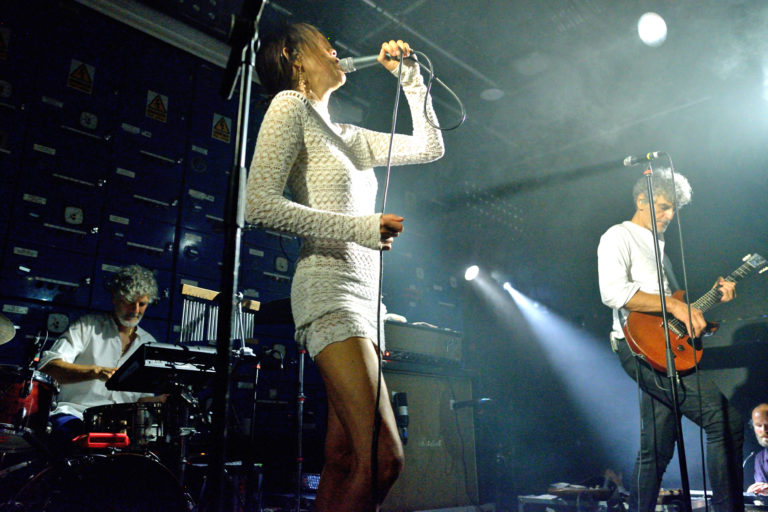 Lucas: Do you feel constant pressure to make new music at this point in order to maintain your following?
Lucas: Do you feel constant pressure to make new music at this point in order to maintain your following?
Simone: Well nowadays with things happening so fast, there is so much information everywhere. You can’t just put out a record, you have to really promote yourself. Nowadays everybody can put out a record. When we were first starting out, you needed a label, and you chose a specific label because you wanted to add your sound to that label. Now it’s different. It’s so easy to put out music and you can really become somebody without any help, it’s more democratic in a way. But you need to work harder in order to keep people’s attention. If you don’t have a new record then it’s tougher to get the big Summer festival gigs.
Lucas: Do you have an understanding with your bandmates Kazu and Amadeo that you should be in a good place inter-personally before you go on stage that night? You know, where the three of you all make sure you are cool with each other?
Simone: No. We could be in a really bad place and go on stage. Nothing is for sure. You have no control over what is going to happen on stage. You can only steer it a little bit. Sometimes we have a really bad argument before a show, then we play amazing, and you begin to think: should we have an argument before every show? That’s the beauty about playing live. You are not completely in control, anything could happen once you get on stage. I could make a mistake and that mistake could affect me for the rest of the show, or I could just move on from that mistake and play great. As a drummer, you are like a sheep dog, where you keep everyone in one place. Sometimes I sense that my band members are solid on a given night and that lets me improvise and experiment a little bit more, then other nights I feel that I need to lock it down and provide them a very solid backbone. Understanding that job is extremely important.
Lucas: In a live environment anything can happen, does that vulnerability make you feel threatened or motivated?
Simone: You have to embrace it.
 Lucas: Does a veteran like you still get nervous before shows?
Lucas: Does a veteran like you still get nervous before shows?
Simone: Yes. I had a phase where I was very nervous. I don’t know what happens or what causes it, but sometimes I’m playing a song and something kicks in and I get very afraid.
Lucas: Is it a mistake that triggers it?
Simone: No, I don’t know what it is. It’s the unknown. For me that’s very tricky, I have to try to guide it and push it away and relax and breathe.
Lucas: Is it like a panic attack on stage?
Simone: A little bit, yeah. So sometimes I have to just focus on one thing, like my playing on the bass drum or hi-hat. Obviously I am playing with the band and I am in the music, but my main focus will be on just one thing. That will be my sort of anchor or focal point. This sometimes helps.
Lucas: So that’s just straight up stage fright. It’s what can happen when you are there and thousands of people are staring at you.
Simone: Or twenty people.
Lucas: Does it happen when nobody shows up to a gig?
Simone: I find it is somehow harder to play for smaller audiences than for larger audiences. When there is a lot of people you get so much energy. When we were touring with the Red Hot Chili Peppers we played a lot of huge stadiums. One night Chad Smith waved me onto the stage to play the ending of a song just for fun, and there were maybe 30 or 40 thousand people there. The energy I felt from the audience at the end was incredible.
Lucas: That’s too funny. Chad just wanted to give you a whiff of that feeling. How was it touring with the Chili Peppers?
Simone: Yeah, it was John Frusciante’s idea to bring us on tour with them, and he’s really a very open-minded music lover. They were super supportive and super nice. I thought we would never meet them, but we hung out with them a lot and they were just really great.
Lucas: How did the Chilli Pepper fans respond to Blonde Redhead? They were probably more into a harder, more funkier sound, and you guys come on stage with a bit more of an avant-garde flavor, you know, hardly in the funky range.
Simone: Well to be honest, a couple of nights we got booed. But then Flea would come on stage and say on the mic to the fans that they really should pay attention and he would give us nice compliments. Also if he saw that the crowd was rowdy before we went on, he would go on stage and tell the crowd to behave, which was pretty amazing.
Lucas: Wow that was super cool of Flea to do that. Especially since those guys don’t really strike me as being Blonde Redhead fans.
Simone: Well you would be surprised by how open-minded they are. They love Fugazi and they jam with them whenever they go to DC. Stuff like that. John Frusciante brought a lot of good interesting obscure elements to their sound.
Lucas: As far as you bringing interesting new elements to the songwriting of Blonde Redhead, do you ever feel overwhelmed by all of the sound options available in the songwriting process? As in, which keyboard sound out of these 20 million should we use in this song?
Simone: You have to keep yourself limited. I think keeping yourself limited is a very important factor in staying creative. When we go into the studio, if we could, we would still record on tape and use analog instruments and nothing else. Unless someone knows exactly what sound they want, then going through all these options is just a total waste of time. I just think that we don’t need it all. Today when you go into the studio there are so many options and it can really be a waste of time unless you really know what you want, which sometimes can be difficult and make you feel vulnerable.
Lucas: What are your plans for Blonde Redhead for 2019?
Simone: We have a couple of more songs coming out. Just putting out one song at a time. We are also working on new music for a record. We will probably be recording a lot this fall.
Lucas: Well on behalf of the Gretsch family, I would like to thank you for playing Gretsch drums and for being such a wonderful brand ambassador over the last quarter century.
Simone: Thank you!
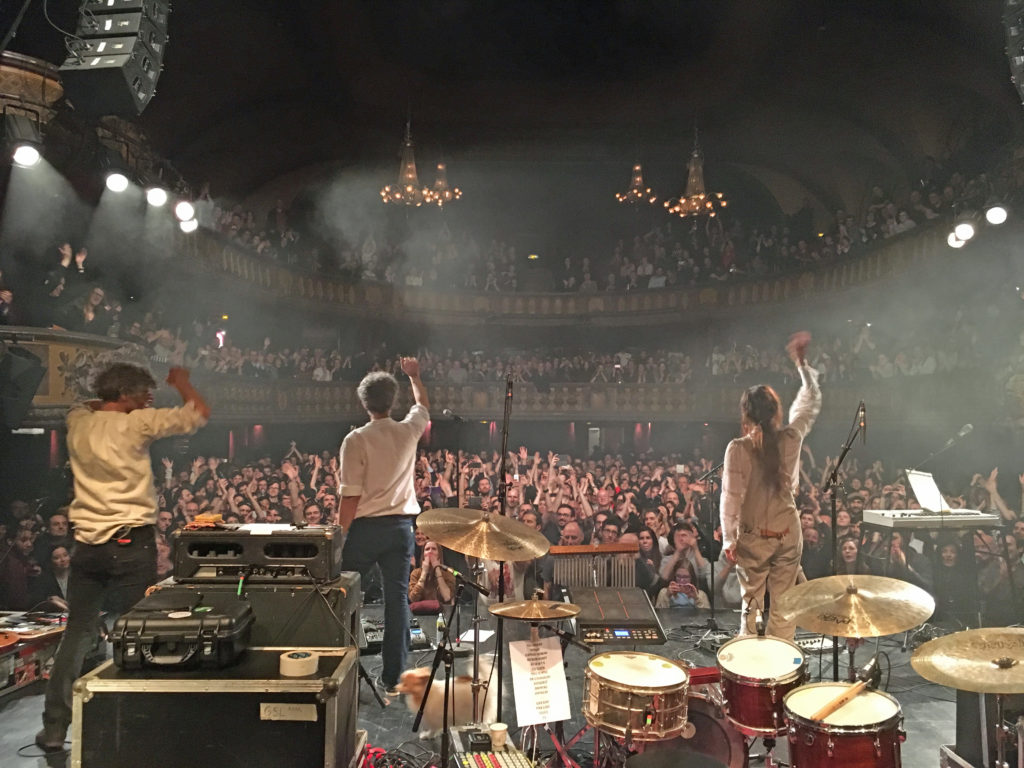 Blonde Redhead. Photo: Carlo Garré.
Blonde Redhead. Photo: Carlo Garré.
Follow Blonde Redhead: Website, Facebook, Twitter, YouTube, Instagram.
— Lucas von Gretsch
(Gretsch Generation 5)
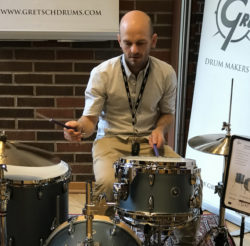
Follow Lucas on Twitter or send him an mail at lucas@gretsch.com
